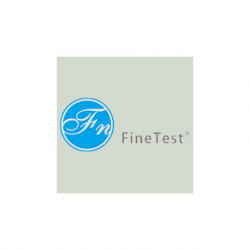Size
100µg
Storage Conditions
PBS with 0.02% sodium azide and 50% glycerol pH 7.3, -20℃ for 12 months(Avoid repeated freeze / thaw cycles.)
Applications
ELISA, IHC, WB
Target
MUL1
Research Area
Epigenetics, Signal Transduction, Metabolism
Form
liquid
Recomended Dilution
WB: 1:500-1:2000
Type Clonality
polyclonal
Immunogen
mitochondrial E3 ubiquitin ligase 1
Minimum Purity
≥95% as determined by SDS-PAGE
Synonyms
Mitochondrial ubiquitin ligase activator of NFKB 1|E3 SUMO-protein ligase MUL1|E3 ubiquitin-protein ligase MUL1|Growth inhibition and death E3 ligase|Mitochondrial-anchored protein ligase|Protein Hades|Putative NF-kappa-B-activating protein 266|RING finge
Host
Rabbit
UniProt ID
Q969V5
Gene ID
79594
Purification
Immunogen affinity purified
Iso type
IgG
Reactivity
Human, Mouse, Rat
Observed MW
35 kDa
Background
Exhibits weak E3 ubiquitin-protein ligase activity. E3 ubiquitin ligases accept ubiquitin from an E2 ubiquitin-conjugating enzyme in the form of a thioester and then directly transfer the ubiquitin to targeted substrates. Can ubiquitinate AKT1 preferentia



